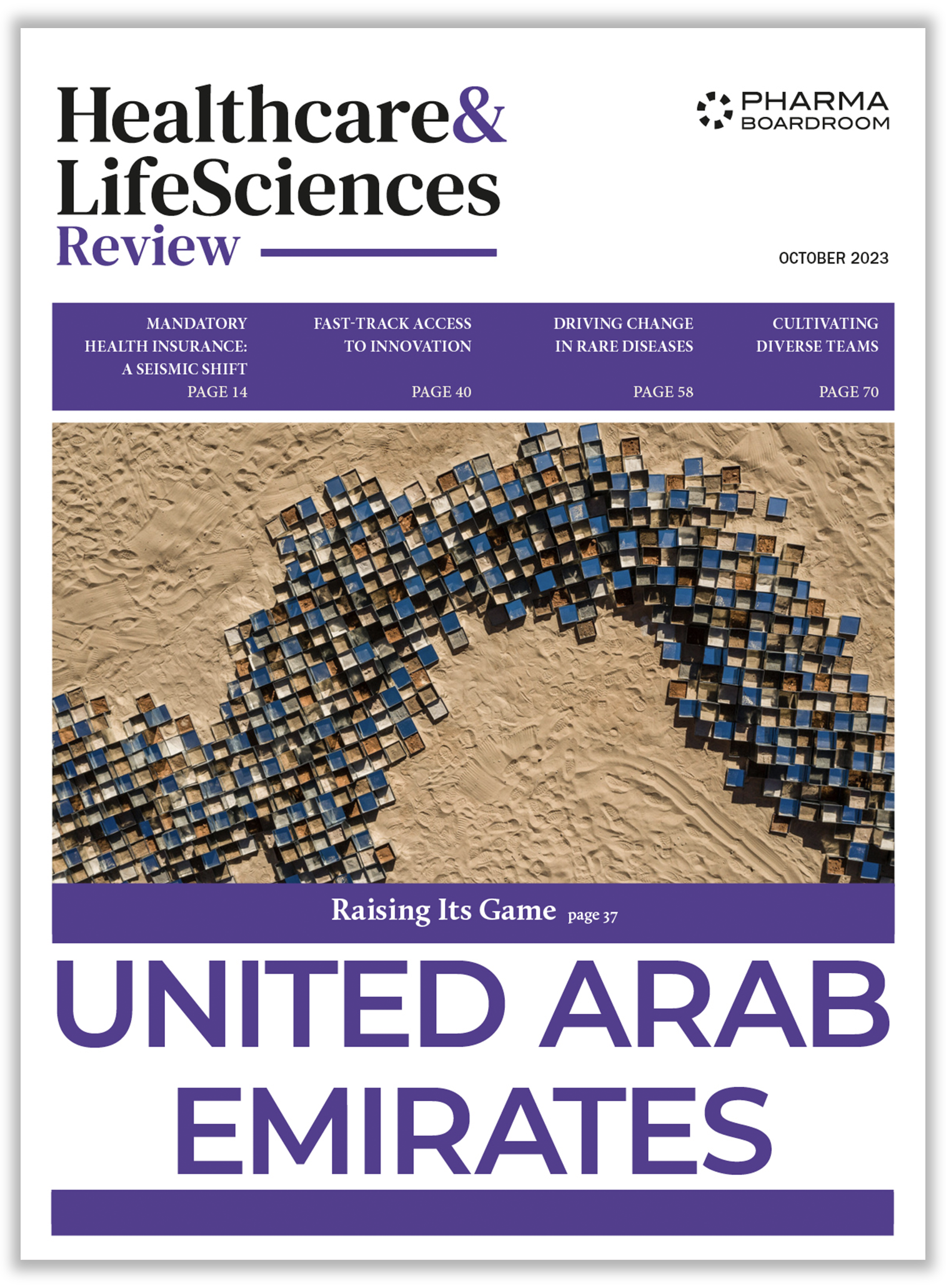Janis Silins of the Association of Biopharmaceutical Drug Manufacturers in Latvia discusses the organization’s purpose, collaboration efforts, and role in shaping policy reform.
Could you please start by introducing the Association of Biopharmaceutical Drug Manufacturers in Latvia (Biofarmaceitisko Ražotāju Asociācijas Latvijā (BRAL)) and your role within the association?
The Association was registered back in 2012 and nowadays possesses a membership of 11 commercial entities. Many of our members are the affiliates of some of the most innovative drug developers in the world. The aim of the Association is to unite Latvian and foreign legal and physical entities performing activities connected with availability of biopharmaceutical medicinal products in Latvia. Activities of the BRAL are mostly relating to promotion of discussion between various stakeholders about biopharmaceutical matters, including elaboration and implementation in practice initiatives concerning biopharmaceuticals, ensuring availability and access to biopharmaceutical medicinal products in Latvia. As managing member of the Board, I am responsible to manage a creation of strategic approaches and to move forward with our initiatives and deliver on our goals.
The Association of International Research-based Pharmaceutical Manufacturers (SIFFA) already promotes the interests of innovative pharmaceutical companies in Latvia. Why is there a need for an additional association and grouping?
We noticed a trend in 2012 in which biopharmaceuticals were starting to position themselves as significant players within the local Latvian pharma market and wanted to raise awareness in policy making circles about how best to deal with the specific products of this segment. We recognized that valid legislation needed to be crafted and shaped, because biopharmaceuticals have their own unique characteristics. Biopharmaceuticals are a tremendous source of growth, not only in the pharmaceutical market, but with respect to the broader economy, supporting the improvement of health status in many areas such as rheumatology, oncology, rare deceases, etc.. This need for special attention to biopharmaceuticals was the reason to establish a single focal point through which we can engage with government and the broader state apparatus to ensure that biopharmaceuticals are properly dealt with. And this special focus on various aspects relating to biopharmaceutical medicines is what specifically distinguishes BRAL from SIFFA.
What, then, would you describe as the overarching goals of the BRAL?
[Featured_in]
We strive to play a proactive role in fostering the emergence of a financially sustainable and high-performance healthcare system in which patients gain ready access to first class, effective therapies. This means promoting not just the efficient usage of state of the art biopharmaceuticals, but an entire supporting ecosystem encompassing companion diagnostics, personalized healthcare, and so on. We are eager to partner with the authorities in the creation of an economically viable public health system in terms of the cost of treatment, which surpasses and exceeds classic approaches and revolutionizes the patient pathway.
What practical steps are you taking to bring this vision to fruition?
The first step is very much about raising awareness around the sort enabling policy environment that needs to be put in place if Latvian society is to reap the full benefits of advancements in medical science. There are great opportunities out there that, if properly exploited, would massively improve the Latvia’s public health scenario.
We are also drawing attention to the fact that current legislation in the country is not accommodating the new era of medical science that we are all increasingly exposed to.
How would you describe the extent of your collaboration with other associations, government, and patient groups?
In terms of our interactions with other associations, I would say we have a good number of topics to which we can closely relate. So far we have constructive relationship with government institutions such as the Ministry of Health and National Health Service. It is clear that only in close cooperation with all stakeholders we can find proper solutions for improvement of healthcare in our country.
How would you assess your influence in the sense of your capabilities to affect decisive change?
We believe that the size of the organization does not necessarily reflect its effectiveness, and this also has allowed us to be efficient. In accordance with our operational model, we initiate the circulation of information on topical issues and our members submit ideas about what kind of priorities we need to have as an association. To date, this modus operandi has functioned well.
[related_story]
I think we have constructive partnership with broad range of stakeholders. We are already members of the advisory board of pharmaceuticals (Farmācijas jomas konsultatīvā padome) convened by the Ministry of health and are involved on various policy developments including biopharmaceuticals.
What’s more, in 2015, the Letter of Intent (LoI) was signed between the Ministry of Health of Latvia and the European Federation of Pharmaceutical Industries and Associations (EFPIA). By this LoI, the parties foresee the development of mutual cooperation in order to improve the access of patients to innovative medicines. Four working groups were established for development of mutual cooperation in such areas as Oncology, Data monitoring, contracting and science. BRAL has been invited by Ministry of Health to participate in all working groups where we are able to provide feedback from different angles of our expertise in innovation and areas where also biopharmaceuticals are involved.
To date our cooperation with other stakeholders has been generally successful.
What your perception in terms of what the current administration is doing and the implications of the Health Financing Bill?
I believe that the situation is becoming more optimistic. If we take the statistic of healthcare funding in Latvia, there is frankly not much that any institution or government could do to build a high quality healthcare system with a mere 3.2 percent of the GDP allocated as public expenditure.
Lately we have witnessed policy makers recognizing that this as a serious issue, and now there is a clear message on how the public expenditure for Healthcare needs to increase at least to 4 percent of the GDP by 2020.
Our members fully support that appropriate public health funding is a prerequisite to the future sustainability of the national health system. The country now needs to establish a clear vision on how we actually go about attaining this 4 percent and what society should expect if this number is reached. The viable pathway forward is sustained investment in healthcare on behalf of the state.
Why do you believe it has taken so long to reach this point?
It is not an easy to answer on this question. I think that after the economic crisis in 2009 when GDP dropped down to 18.4 percent (in Q3 2009, seasonally non-adjusted, year-on-year), many areas of economy were “burning issues”. When you face so much turbulence, you need to set up a clear vision on how to survive, not just try and spend your way out of it. You need to balance the all the aspects of the economy to prevail.
The good news is the economy of Latvia is now in shape to grow, and we do understand that the government still has to be financially prudent and grow the economy wisely. We present ourselves very much as a willing partner that wishes to contribute to identifying the optimum solutions to the big societal and economic issues of the day.
When we met with the regulator, we got the sense that the administration is very keen to make Latvia more business-friendly, but, as you implied, there are limits to current capabilities in terms of hard resources. Just how ready is Latvia to receive state of the art biopharmaceuticals?
There is a willingness to provide the best possible treatment at an affordable cost. Innovation in the pharmaceutical industry is still under discussion, whether is a totally new approach or is just one new INN. There is also a clear recognition on how these new approaches to treat patients can bring broader efficacy and effectiveness, which is evaluated not just in terms of direct costs in healthcare, but also in terms of benefits for society.
Initiatives like ‘pay per performance’ and ‘results-based pricing’ could have a big impact in achieving cost containment, and from our association’s perspective, we have already initiated a discussion on how to utilize these mechanisms to create a system where we can find solutions that are simultaneously mutually acceptable for all stakeholders.
Of course, there are some pre-requisites for implementing such methodologies. At base there will have to be a structure to collect real-world data so we can get genuine clarity on key questions about the success rate in treating patients and the true cost to society and the economy of specific products. Only once that is in place, will payers be able to evaluate if treating patients with new and targeted therapies will deliver greater benefits than current scenario today. It is not always an easy task to implement a new system because, as I am sure you have already seen, the market is pretty regulated.
Nevertheless, the outlook is promising. We are confident that biopharmaceuticals and associated elements such as companion diagnostics can really make a qualitative difference both to the health outcomes of patients, but also bringing about a finely tuned health system that does what it is meant to do. We detect a willingness on behalf of the policy makers to bring about improvements and will be there to assist the process.







